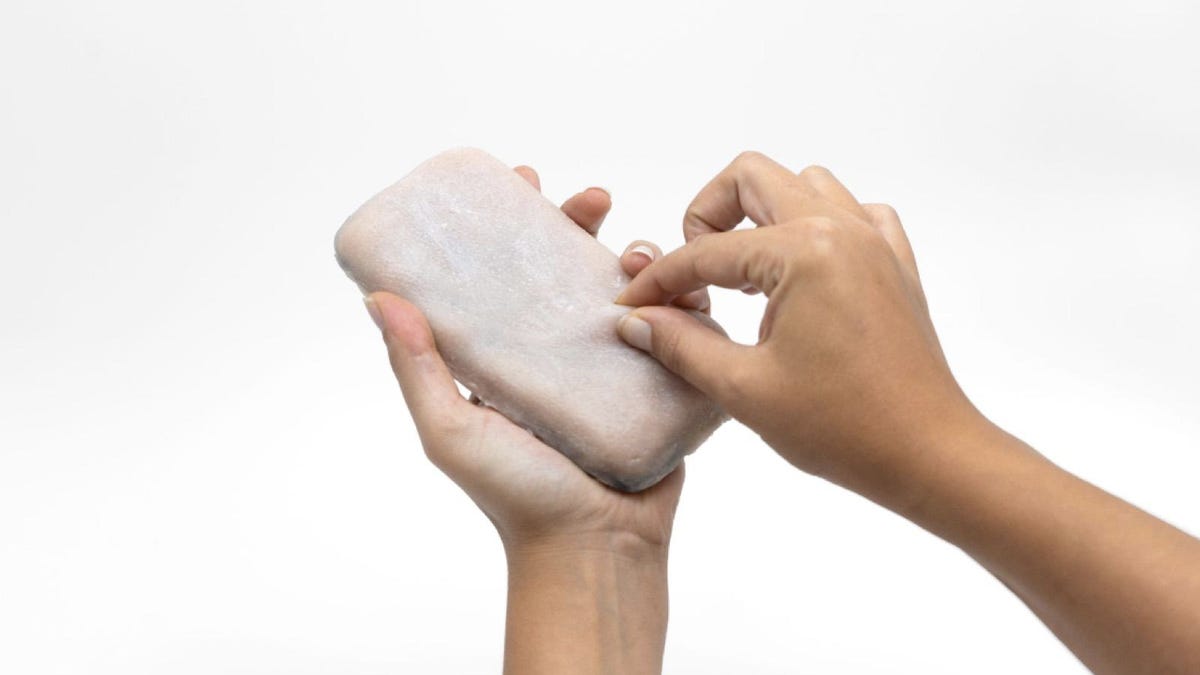A phone case with artificial human skin? It could be more useful than creepy
The case is pinchable and ticklish. The tech could open up new possibilities for robots and prosthetics.

Skin-On is a prototype of an artificial skin interface for your smartphone or other device.
In case pinching your phone is something you've always wanted to do, a new high-tech phone case could make that very specific desire possible. Marc Teyssier, a Ph.D. student at Télécom ParisTech, created Skin-On, a frighteningly realistic artificial skin interface for interactive devices that responds to touch. The interface can be used on mobile devices, wearable devices and touch pads.
"When we are talking to someone face-to-face, we sometimes use touch to convey affect, emotions and more generally enrich the discourse. Now that mediated communication is performed through the devices, we lost the sense of touch communication modality," Teyssier said in an email.
Even if it looks a little creepy, Teyssier thinks that adding artificial skin to technology is worth exploring -- for example, adding artificial skin to robots or prosthetics.
"Artificial skins design for robots is usually focused on reproducing the tactile acuity and sensing capability, our design allows us to perform expressive gestures such as pinching while having a robust touch detection. The texture impacts the tactile perception and makes the interface more humanlike and realist," Teyssier said.
The interface could streamline a few aspects of how you use your phone. You can interact with your mobile apps by tapping the skin, pinch the back of your phone to turn the volume up, use your finger as a joystick on a track pad and have better grip detection on mobile, says the website for Skin-On.
The skin is programmed to associate different gestures with different emotions, according to New Scientist. Abrupt hard pressure on the skin could mean anger, tapping could mean the user is seeking attention, and continuous contact and stroking is associated with providing comfort.
Teyssier's original exploration into human-computer interaction was the project Mobilimb, a robotic finger on the smartphone that could touch the user. Teyssier said that he also wanted to experiment with an anthropomorphic input. The 1999 sci-fi film Existenz written and directed by David Cronenberg also inspired Teyssier to create Skin-On.
"I saw this movie when a was studying interaction design and I think it changed my view of technologies, how they look now and how they could look and feel in the future," he said.
Teyssier's website depicts how he modeled Skin-On after the layers of human skin's three layers -- the epidermis, the dermis and the hypodermis. Skin-On has four layers -- input gestures; visual and tactile; sensing; and kinesthetic. Teyssier said he's explored different pigmentation including brown skin-tones. Skin-On remains a prototype for now.
Originally published Oct. 21.
Update, Oct. 22: Adds comments from Marc Teyssier and more details.

